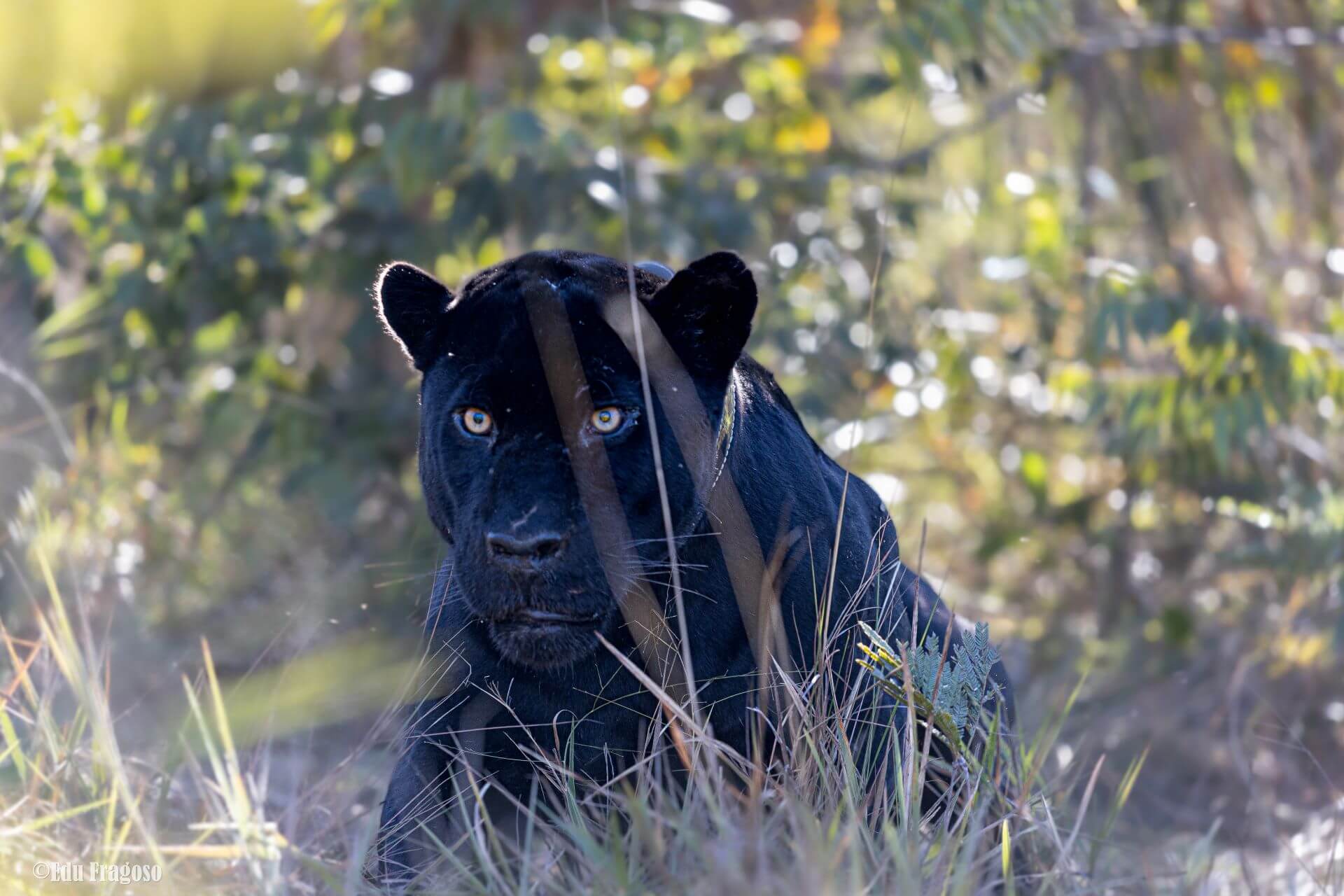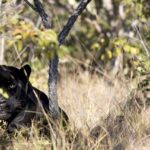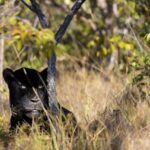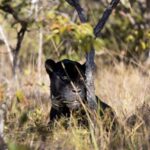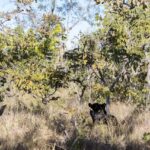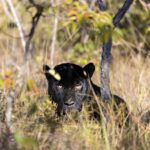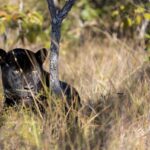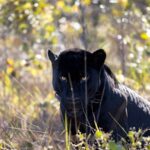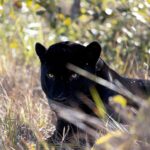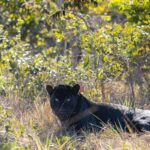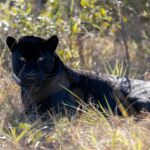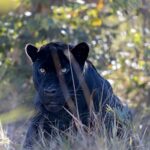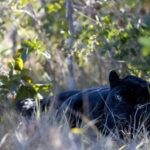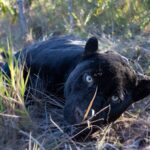Onçafari’s research in the Cerrado is in a new stage: placing GPS collars on jaguars, including a black one (melanistic jaguar), in partnership with Pousada Trijunção, fills our biologists and veterinarians with enthusiasm. The population dynamics and life cycle of jaguars and pumas in the Southern Pantanal, in Mato Grosso do Sul is relatively mastered by the team of biologists, veterinarians and touristic guides of Onçafari, after all the group performs their studies and experiments in the biome since 2011, although there is much to learn.
About the behavior of jaguars in the Cerrado, another biome where Onçafari works, the reality is different. There is much to be done, as the project started, in a practical sense, over a year ago.
The animals live in an environment with completely different characteristics, with feeding, reproduction and movement habits different from the ones described by the Onçafari team in the Pantanal.
That’s why capturing a jaguar and a black jaguar, this month, next to Onçafari’s base in the Cerrado, Pousada Trijunção, in the border between the states of Bahia, Minas Gerais and Goiás, in Central Brazil, brought excitement to our research team. In a few days, it was possible to notice how deep the expectation got.
The black jaguar is a melanistic jaguar. They are from the same species as jaguars, Panthera onca, but some individuals, due to a genetic mutation, produce a larger amount of the pigment melanin, giving them a dark color.
We also note that to “capture an animal” means to sedate it with an anesthetic dart, perform a clinical analysis, gather material for laboratory tests, measure it and place a collar equipped with GPS, capable of transmitting their location and movement remotely and in great detail.
The biologist Edu Fragoso leads Onçafari work with jaguars in the Cerrado. “We have, now, an excellent opportunity to bring to another level the knowledge about the life of these fascinating animals in the biome. Another focus of the study is to see how they are behaving to the ongoing transformation of the environment, through the growth of non-sustainable agribusiness” he says. “The knowledge gathered with satellite monitoring of animals will be essential to guide us and to define which areas can be used in the creation of ecological corridors in order to connect wild populations”.
The idea is a practice already in place in other regions of Brazil, meaning, creating ecological corridors between protected areas to ensure that these lands remain untouched, for being essential for environment preservation. Generally their sizes are quite large.
Extended project
Part of the 33,000 hectares of the area of Pousada Trijunção border the 230,000 hectares of the Parque Nacional Grande Sertão Veredas. Onçafari’s research team has put camera traps in both areas. The images we have been getting are added to the information from the GPS collars and together they will allow researchers to answer many of their questions about the biodiversity in the region.
For example: to understand the movement patterns, reproduction, behaviors, feeding habits, how they hunt, what are their preys, since the prey availability is lower in comparison with the Pantanal, how they protect themselves from the heat in a area with few and smaller trees and if they attack the livestock of nearby farms, among other inquiries.
It’s important to highlight that Cerrado is the natural and the main environment of maned wolves, also studied by Onçafari, and they have been monitored through GPS collars since 2018.
The incidence of black jaguars in this region of the Cerrado is relatively high, estimated in almost half of the individuals, while the frequency of melanism for the species throughout its distribution is 9%. In Pantanal, for example, there are no records of black jaguars.
Poaching and the pressure caused by uncontrolled deforestation for soy, corn and exotic pasture grasses plantations around Parque Nacional Grande Sertão Veredas is a threat to the species survival.
“The respect shown by the professionals of Pousada Trijunção to sustainable protocols to harmonize farm production with environment conservation demonstrates how they can both coexist” according to Fragoso.
Onçafari’s project in the Cerrado aims to ensure a preserved environment for the existence of not only jaguars, black or not, pumas or maned wolves, but all the fauna and flora. “I have a dream that the black jaguar will become a symbol of resistance in the fight for the conservation of the Cerrado”, says Fragoso.
To find out more details and see pictures of the jaguar captured access https://www.instagram.com/p/CuFnskMP-_A/
Photos by Edu Fragoso

